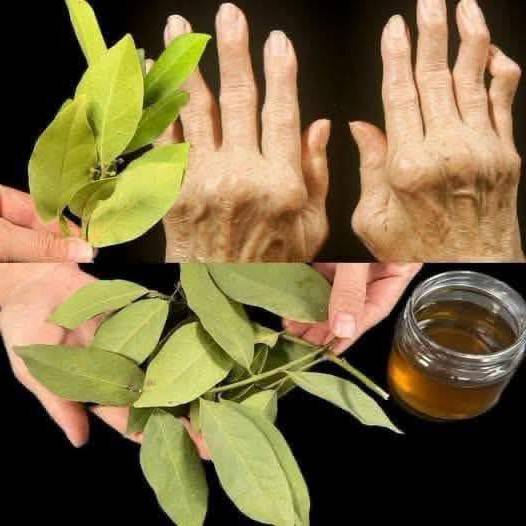ADVERTISEMENT
Sure! I understand you’re asking for an article that explores the claim “Apply bay leaves to your joints, and in a week you’ll be walking like a teenager.” Let’s break this down and dive into the topic. While I can’t guarantee that applying bay leaves to your joints will have miraculous effects, I can explore the medicinal history of bay leaves, their potential benefits, and alternative treatments for joint health. This article will be a deep dive into bay leaves’ purported benefits, how they are used, and whether or not they can truly improve joint health. Let’s get started!
—
### The Power of Bay Leaves: A Natural Remedy for Joint Health?
The world of natural remedies is filled with a vast array of plants and herbs that people have turned to for centuries in hopes of alleviating various ailments. Bay leaves, scientifically known as *Laurus nobilis*, are one of the many herbs that have been used in folk medicine. Often known for their culinary uses, bay leaves have been claimed by some to help with joint pain, inflammation, and even mobility issues.
One such claim circulating in wellness circles suggests that applying bay leaves to your joints can restore mobility, ease pain, and leave you walking like a teenager in just a week. But is there any truth to this claim, or is it simply another unverified home remedy? In this article, we’ll explore the properties of bay leaves, how they may affect joint health, and whether they are truly a miracle cure or simply another piece of folk wisdom.
### A Brief History of Bay Leaves in Medicine
Bay leaves have a long history in both culinary and medicinal practices. Originating in the Mediterranean region, the bay laurel tree (*Laurus nobilis*) has been prized for its aromatic leaves, which are used in cooking, as well as for their medicinal properties. Bay leaves were highly regarded in ancient Greece and Rome, where they were used in a variety of ways.
In Greek and Roman cultures, bay leaves were associated with healing and protection, often used to create garlands for victors and warriors. Over time, bay leaves found their way into herbal medicine, where they were used to treat everything from digestive issues to inflammation and pain.
The medicinal uses of bay leaves are largely attributed to their high content of essential oils, which include compounds like eucalyptol, pinene, and caryophyllene. These compounds are believed to have anti-inflammatory, analgesic, and antimicrobial properties, making them useful in the treatment of conditions such as arthritis, muscle pain, and skin irritations.
### The Active Compounds in Bay Leaves: Can They Help Your Joints?
The effectiveness of bay leaves for joint health largely hinges on the compounds they contain. Let’s break down some of the key ingredients that may contribute to their supposed benefits:
#### 1. **Eucalyptol (1,8-Cineole)**
Eucalyptol is a compound that has been shown to have anti-inflammatory and analgesic properties. It is commonly found in the leaves of plants like eucalyptus and bay laurel, and it is believed to help reduce inflammation, improve circulation, and provide relief from pain.
Some studies have demonstrated that eucalyptol may help reduce joint pain and swelling by inhibiting the production of pro-inflammatory molecules. While the research on eucalyptol’s effectiveness for joint health is still limited, it has been used in topical applications for muscle and joint pain relief in traditional medicine.
#### 2. **Pinene**
Pinene is another compound found in bay leaves that has anti-inflammatory and pain-relieving properties. This compound is also found in pine trees and is known for its ability to reduce inflammation and improve breathing by opening the airways.
When applied topically, pinene may help reduce the pain and swelling associated with joint inflammation. It is often used in combination with other anti-inflammatory ingredients to create soothing balms or oils for arthritis and muscle pain.
#### 3. **Caryophyllene**
Caryophyllene is a terpene found in bay leaves and many other plants, such as black pepper and cloves. It has been studied for its anti-inflammatory and analgesic properties, which make it a potential treatment for joint pain, muscle aches, and other inflammatory conditions.
What’s unique about caryophyllene is that it interacts with the body’s endocannabinoid system, which is involved in regulating pain and inflammation. Some research has shown that caryophyllene can help alleviate pain, making it a potential candidate for relieving joint pain when applied topically.
#### 4. **Flavonoids and Antioxidants**
Bay leaves are rich in antioxidants, which can help protect the body from oxidative stress. Oxidative stress contributes to inflammation and can worsen joint pain over time. By neutralizing free radicals in the body, the antioxidants found in bay leaves may help reduce inflammation and promote joint health.
The presence of flavonoids, another group of antioxidants, further supports the claim that bay leaves could help protect joint tissues and reduce pain. Flavonoids have been shown to have anti-inflammatory effects, which may be beneficial for conditions like arthritis and other joint disorders.
For Complete Cooking STEPS Please Head On Over To Next Page Or Open button (>) and don’t forget to SHARE with your Facebook friends
